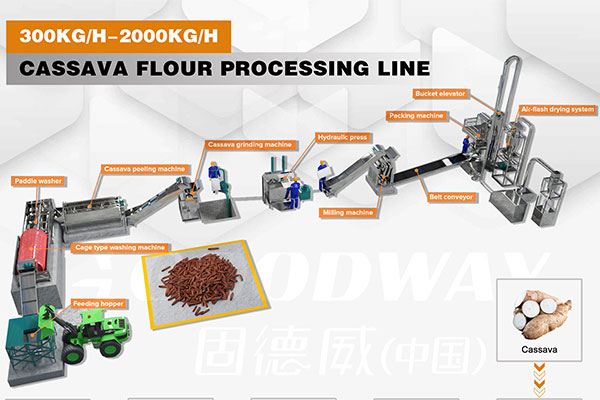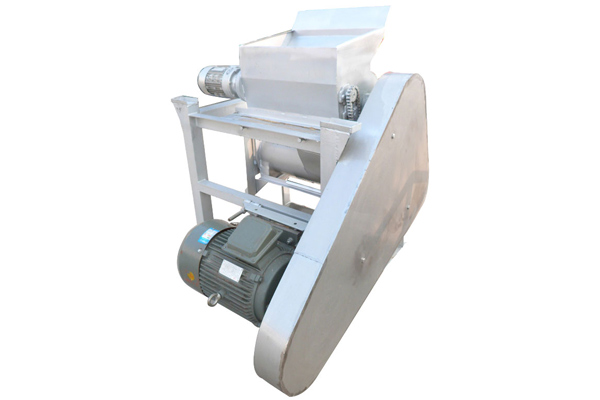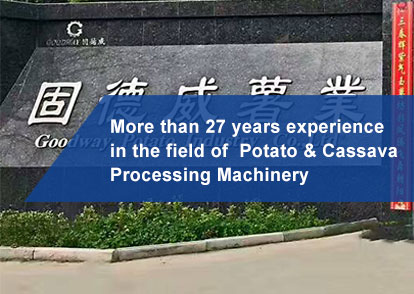On the issue of cassava starch clarity, whiteness and precision, in fact, it is the problem of handling the way of separating cassava starch slurry and cassava residue and starch equipment filtration technology. In the process of starch processing, cassava roots are cleaned and crushed after the initial separation of starch slurry and cassava residue, a large amount of cassava residue is then discharged and the starch slurry goes to the next section, but there are still some cassava residue left. Subsequent filtering, purification, desanding and cyclone refining process is carrying out precise and detailed multiple separation work. The purpose of these steps is to separate out the residual potato residue, gravel, impurities, oil powder, fruit powder, protein and other non-starchy substances. Ultimately these operations ensure the fine white and dense starch.
In starch processing, there are three main separations when broken down by processing steps. Users use different equipment to achieve different starch separation and purification purposes, so as to improve the starch filtering and purification rate and flour yield.
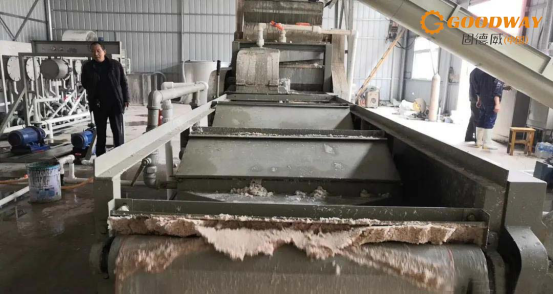
1. First separation
The crushed starch slurry will enter the fine filter to start the first stage of separation and filtration. Two fine filters and multi-mesh sieves allow for the initial separation of the excess cassava residue from the starch slurry.
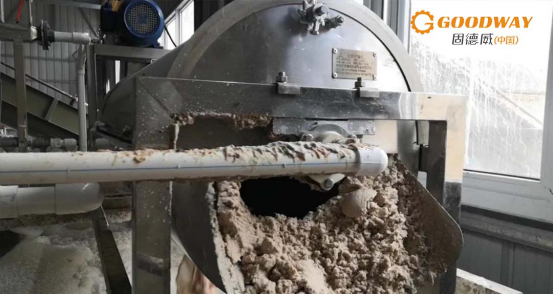
2. Second separation
Then it is passed through the refine microfilter for secondary filtration of starch slurry to separate and remove the fine impurities in starch. The refine microfilter with 160-260 mesh screen, ultra-low speed rotation and no centrifugal force can fully guarantee the fine filtration.

3 . Third separation
The starch slurry filtered twice is pumped into the starch cyclone station. Depending on the density, particle size and properties of each material, different centrifugal forces are generated. The groups then separate and discharge the oil powder, pectin, protein and water, finally retaining the fine white starch with high precision. At this point the starch has become granular, but the water content is still slightly high, so it needs to be dewatered and dried again before it becomes the final finished dry starch.
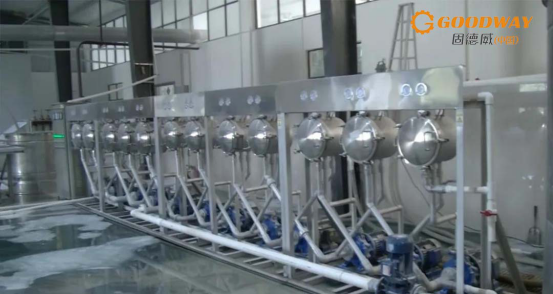
In processing cassava starch, the complete separation of starch and non-starch materials needs to go through multiple processes, which cannot be completed by just one simple equipment. Among them, filtration, sedimentation, sand and mud removal, and cyclone refining are all processes that must be undergone in order to achieve effective separation of cassava residue, impurities and starch. Only with reasonable combination and comprehensive use can we get pure and white high quality starch.

 EN
EN
 fr
fr  es
es  it
it  pt
pt 